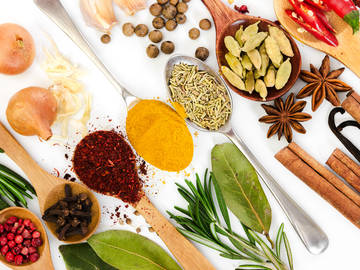Polyphenols, abundant in various foods and beverages, have garnered attention for their potential health benefits, including modulation of the gut microbiota. However, the relationship between habitual polyphenol consumption from everyday diet and gut microbiota composition remains incompletely understood. This study aimed to investigate the associations between habitual polyphenol consumption, assessed through dietary questionnaires, and gut microbiota composition in healthy adults.
Methods
The International Cohort on Lifestyle Determinants of Health (INCLD Health) cohort, consisting of 96 healthy adults, was utilized for this exploratory analysis. Participants completed dietary questionnaires to estimate habitual polyphenol consumption, while gut microbiota composition was assessed using 16s microbiome data. Microbial taxa abundance and diversity measures were analyzed across low-, medium-, and high-exposure groups based on polyphenol consumption levels. Spearman’s rank correlations were employed to identify microbial taxa associated with dietary polyphenols.
3. Key Scientific Findings
3.1 Differential Trends in Microbial Taxa Abundance:
- Microbial taxa abundance varied across low-, medium-, and high-exposure groups of habitual polyphenol consumption, while diversity measures remained consistent.
- Taxa positively correlated with dietary polyphenols included Lactobacillus, Bacteroides, Enterococcus, Eubacterium ventriosum group, Ruminococcus torques group, and Sutterella.
- Taxa identified as biomarkers of polyphenol-weighted herb and spice consumption included Lachnospiraceae UCG-001, Lachnospiraceae UCG-004, Methanobrevibacter, Lachnoclostridium, and Lachnotalea.
3.2 Associations with Specific Polyphenol Classes:
- Individuals with higher total polyphenol, flavonoid, and lignan consumption exhibited higher abundance of Lactobacillus and Sutterella.
- Lachnospiraceae UCG-001 and Lachnotalea displayed positive correlations with polyphenol and stilbene consumption, respectively.
- Inverse relationships were observed between polyphenol consumption and abundance of Eubacterium ventriosum group, Ruminococcus torques group, Bacteroides, Enterococcus, and Lachnoclostridium.
3.3 Implications for Health and Disease:
- Microbial taxa positively correlated with polyphenol consumption are involved in immunoregulatory processes, short-chain fatty acid production, and bile acid metabolism.
- Inverse correlations between polyphenol consumption and certain microbial taxa suggest potential benefits for gastrointestinal and cardiovascular health.
- However, overabundance of some taxa may be associated with systemic autoimmune diseases and cardiovascular risk factors.
4. Additional Findings from the Study:
- Certain beneficial gut microbes, such as Lactobacillus, increased with higher polyphenol intake.
- Harmful bacteria were less present in participants with higher polyphenol intake.
- Black pepper, onion, garlic, cinnamon, ginger, and turmeric were the herbs and spices focused on, with cinnamon having the highest polyphenol count.
- The study found consistent microbial diversity across all polyphenol consumption groups but noted differences in specific microbial taxa abundance.
- Higher polyphenol consumption may support an intestinal environment with lower levels of opportunistic and pathogenic bacteria.
These findings contribute to the growing body of evidence on the impact of dietary polyphenols on gut microbiota and underscore the importance of incorporating polyphenol-rich foods into daily diets for promoting gut health. Further research with larger sample sizes and diverse populations is warranted to validate these findings and explore the potential therapeutic implications of polyphenol-microbiota interactions.
Link to the article : https://tinyurl.com/2wrpcux9
